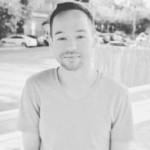A men’s counselling agency in Ottawa has launched an initiative to promote knowledge of male sexual trauma and recovery in Canada and abroad.
Inspired by the statistic that one in six men will be sexually abused by age 18, The Men’s Project launched 1 in 6 Canada in March to help social workers and service providers in Canada, the United States and Australia better serve male survivors of sexual abuse.
The statistic stems from Dr Jim Hooper’s findings that most sexual abuse against males goes unreported.
The new initiative includes a training portal, templates for conferences and a database of male-centred therapy resources.
Organizers of 1 in 6 Canada say they recently met with Alberta Minister of Health Fred Horne to discuss how to better serve young male victims. Horne did not respond to a request for comment.
The Men’s Project has operated since 1997. Executive director Rick Goodwin says 1 in 6 Canada was launched to assist male victims outside The Men’s Project’s catchment area.
Most male victims of sexual assault are between the ages of nine and 10, Goodwin says, but the average age of men seeking therapy for abuse is approximately 50 years old. His goal is to reduce the 35-plus years a man will contemplate coming forward while living in pain.
“I don’t think there is one particular way of doing that. But one particular thing we can do is ensure the treatment services speak to men in the best way possible,” he says. “We don’t want to use therapy strategies that work with women and say it will work for guys, too.”
The project is also beginning to seek out men who may have been victims of abuse, rather than wait for the men to access counselling. The Men’s Project has recently gone onsite to the Ottawa Mission and local detention centres to increase its visibility.
Goodwin founded The Men’s Project with Larry Gauthier after both men noticed a lack of counselling services for men in the Ottawa region. Originally a once-a-week group confined to a single room at the YMCA, the project now comprises six group programs in addition to offering one-on-one counselling.
“Therapy demands many things from its clients. You have to share, be vulnerable and be honest,” Goodwin says.
“Masculinity is truly the opposite of that: as guys we are not told to share emotions. Asking for help is seen as a great liability for most men. But asking for help is one of the greatest strengths you can have.”
Although focused primarily on men who were victims of sexual abuse as a children, The Men’s Project also runs several groups, including a fathering program; emotional intelligence, where men dissect the patterns of their previous relationships; and their newest addition, sexual integrity.
Goodwin says the men who attend the sexual integrity program are a healthy mix of gay and straight.
Steve Sullivan, executive director of Ottawa Victim Services, says his organization frequently refers men to The Men’s Project and applauds Goodwin for raising awareness that men need support, too.
Sullivan cites former NHL player Sheldon Kennedy’s decision to come forward with his story that he was sexually abused by his coach as evidence the stigma surrounding male victims is lessening, although it still remains taboo for most men.
“With 1 in 6 Canada, we’re now talking about this on a national level, raising awareness that men can be victims and if they are victims that they can seek help,” Sullivan says.
As for the future, 1 in 6 Canada is launching a campaign titled One Blue String that will encourage musicians to use one blue string on their guitars to signal they support male victims.
Goodwin says The Men’s Project would like to work alongside agencies that are members of the Ottawa Coalition to End Violence Against Women (OCTEVAW) and the Ontario Coalition of Rape Crisis Centres (OCRCC). But, he says, his organization is not allowed to join since it serves men.
“We cannot even participate in community forums because they are around violence against women. We have many of the services of a rape crisis centre. We can’t become members because we’re male-serving. We have yet to transcend some of the gender divides in victims’ services, and that’s a shame,” Goodwin says.
Although most victims’ organizations have a specific focus, networking and sharing resources between crisis centres, regardless of which gender they serve, should be encouraged, Sullivan says.
OCRCC’s website does not list a phone number. There was no response to an emailed request for comment.
Goodwin says that although he believes The Men’s Project merits membership in OCRCC, he will continue to serve men in crisis, whether or not his organization receives validation from larger coalitions.
“We could get ourselves into a knot about it or we can just continue doing the work that we do,” he says. “Doing the work is more important than trying to get into a party where you are not welcome.”


 Why you can trust Xtra
Why you can trust Xtra


